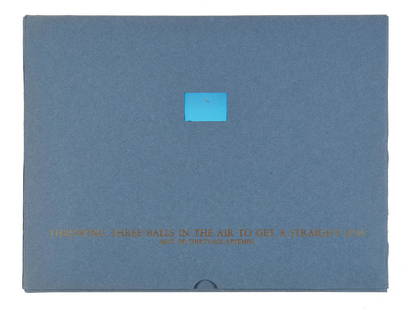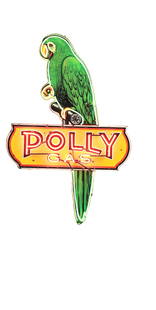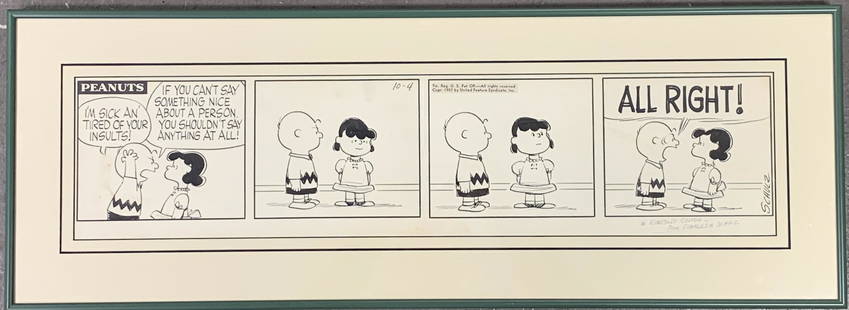
Il Capitolo dei Frati, Original c1600 by Jesuit Monk Sebastiano Chiesa [168200]
Similar Sale History
View More Items in CollectiblesRelated Collectibles
More Items in Collectibles
View More









![Il Capitolo dei Frati, Original c1600 by Jesuit Monk Sebastiano Chiesa [168200]](https://p1.liveauctioneers.com/2699/324080/174413375_1_x.jpg?quality=1&version=1711485545&width=486)
![Il Capitolo dei Frati, Original c1600 by Jesuit Monk Sebastiano Chiesa [168200]](https://p1.liveauctioneers.com/2699/324080/174413375_1_x.jpg?quality=80&version=1711485545)
Item Details
Description
Handwritten in ink by Jesuit Monk in the Late 1600s, Detailing the daily activities and objectives of the top secret works of the Jesuit Brotherhood. Extremely Rare. Original Ecumenical Farce, Il Capitolo dei Frati by Sebastiano Chiesa. Highly controversial text at the time, later banned by Catholic Church. Illegal posession of a copy was at one time a crime punishable by death. Rare, Original 1600s Ecumenical Farce, [x=#8220/]Capitolo de Frati,[x=#8221/] by Sebastiano Chiesa c1650-1670. By Amy Baker, Holabird[x=#8217/]s Western AmericanaSummaryThis is a well-preserved important historical work, handwritten, apparently in the author[x=#8217/]s hand (Sebastiano Chiesa, pseudonym: Fra. Tisabesano Sechia), possibly his personal [x=#8220/]copy[x=#8221/] of his final draft written in the late seventeenth century. The work is an important and controversial composition that has elements of an ecumenical farce, hence all or parts were at one time banned by the Catholic Church. It was perhaps forbidden to write about the lives and private works of Jesuit Friars (Monks). The author appears to have tackled the subject matter of this work mercilessly in this expose of the Brotherhood. Original, handwritten copies of this work are very rare. We researched five other known copies that all appear to us to be penned after this manuscript, as they incorporate edits made to this text and include attributes only necessary for copies intended for public release. We only found two copies that included a16th chapter, and only two that appear to be written by the same hand as this manuscript, attributed to the author himself. Physical DescriptionOriginal handwritten Italian manuscript, hardbound. This volume measures 8.5" x 6.25", inside pages measure 8.25" x 6". Labelled on spine "Capitolo De Frati". * Handwritten in Italian throughout in dark brown ink in large, easy to read cursive handwriting. The writer[x=#8217/]s handwriting in this manuscript appears neat and carefully penned. The lines are straight and the ink is dark and even. The letters are uniformly sized and consistent in shape and form.There are two blank leaves in front of book and eight in the back, in addition to the blank pages inside each cover board. The binding is hand sewn and some pages are loose and beginning to separate from binding. There are 500 handwritten pages (250 leaves). There are 3 partial leaves that have been intentionally trimmed and bound between full sheets, where it appears the editor (perhaps the author) chose to insert additional text. One of these partial sheets is loose from the binding but numbered and labelled. It appears this manuscript was bound sans a title page, as there is no indication of a page removed.Content and Findings The text begins with the first chapter or "Canto Primo". The last two chapters in the volume are Canto Decimo Quninto or Chapter 15 followed by "Canto Ultimo delle Monache" translated, "The Last Song of the Nuns". Each Canto begins with a paragraph or stanza labelled "Argomento" which translates to "Subject", followed by numbered stanzas through most of the writing, until the 3rd stanza of Chapter 14 or "Canto Decimo Quarto", when the numbering of the stanzas unexpectedly ceases. This manuscript has been heavily edited throughout. The edits appear to be made by the author. Many are single word changes with one line through the original word so it is still legible, and the new word written neatly above the old. In at least one case, in the first canto, two full stanzas have been crossed out. There are additions of several pages of text that appear to be penned by a different hand; the handwriting is smaller and the ink is slightly lighter. This first occurs in "Canto Terzo" or the third chapter, where only the first line of the 36th stanza is written in the original pen, then changes to new handwriting and a different ink through the 82nd or final stanza of chapter 3. This change of pen continues into the fourth chapter, "Canto Quarto Seconda Sessione" until the 22nd stanza, when it again returns to the original handwriting. Annotation numbers in parenthesis are present throughout certain cantos, but not all. The last 20 pages of the manuscript are clearly numbered Annotations, grouped and labelled by the cantos in which they appear. However, the notes are bound with "Annotazioni del Canto decimo-quarto" first (14), followed by decimo quinto (15), then Canto Primo (1), Secondo (2) and finally, on the last 2 handwritten leaves are 34 numbered annotations that are not labeled with a correlating canto. Of interest here is that throughout the annotations many names appear, most preceded by "P." for "Padre". While we did not have the means or the time to translate this manuscript, we attempted to translate key pieces of text, which provided some insight into the content of this work. "Capitolo De Frati" translated means Fraternity in Chapter, or Chapter of the Brotherhood or Chapter of the Friars, and is known from other sources as "Il Capitolo Fratesco", described in World Cat as a poem "satirizing the Franciscan order, to which the writer appears to have belonged. Consists of eight cantos, arranged in 8-line stanzas." That description indicates that only half of this manuscript was known to the cataloger. This manuscript contains a total of 16 Chapters, and we have only identified two other copies, one held by the University of Kansas[x=#8217/]s Kenneth Spencer Research Library, that appear to contain all 16 chapters. Other copies reference only 14 or 15 chapters or [x=#8220/]cantos[x=#8221/]. Importantly, on the last page of the final (16th) Cantos, under the last octave of text appears the note, "Il rimante Soppresso dall'Auto re Si desideva", which we have very roughly translated to "The remainder is suppressed, as the author desired". This key phrase opens the door to many intriguing possibilities about this manuscript. In researching the suppression of this work we were able to identify a copy written as an opera that was auctioned in 2019 by Gonneli, an Italian Auction house that specializes in antiquarian literature. The description by these experts is worth noting as it indicates that this Jesuit work by Sebastiano Chiesa was considered at one time by the Catholic Church to be a "Forbidden Book". The item description, translated into English, states: "The daily life of friars becomes a forbidden book; Chapter of the Friars Followed by the Conclave Drama for Music by Sebasitano Chiesa....At the foot of the title page we read: [x=#8220/]Written and applied by F. Gianfrancesco from Milan to the Libreria di Pro in the year 1772 / to be kept withdrawn in the cabinet of prohibited books...This is the satirical poem in fourteen cantos in ottava rima, followed by the clefs of the cantos ... The work circulated only in manuscript form between the end of the 17th and 18th centuries. The author was a Jesuit Sebastiano Chiesa (16th century), also known under the pseudonym of Tisabesano Sechia, who recounted the daily life of a community of friars with lively and sometimes Boccaccio anecdotes...The text of the libretto was compiled by Abbot Gaetano Sertor and cost the author imprisonment in the papal prisons."We found a more detailed description of this manuscript on the ancient book site [x=#8220/]MareMagnum.com[x=#8221/] that refers to their 18th century, 16 chapter copy as [x=#8220/]FRATESCO CHAPTER / Poem / by Father Sebastiano Chiesa Jesuita / from Reggio / Divided into Sixteen Songs[x=#8221/]. The description states, [x=#8220/]Unpublished poem ...describes the daily life of a community of friars, with violent "attacks" on religious orders. It seems that the author, a Jesuit friar, before dying, had entrusted the manuscript into the hands of a friend and that he had some drafts drawn up by copyists. A draft of only 14 cantos is known. This copy contains the broadest draft, including in the added octaves a series of annotations that can serve as a key to deciphering the names of the characters that the author gradually hides under different pseudonyms. The Pezzana, in the Life of P. Ireneo...informs us that Chiesa had written and enriched with keys and annotations a copy. Finally, the last 5 octaves contain the acrostic with the name of the author [Sebastiano Chiesa Reggiano Academician Lepidus]... About the author we have little information: only Quadrio reports that he died in Novellara, and that he composed many poems in the vernacular under the name of Accademico Occulto or Accademico Lepido, but that his major work was the Poema Fratesco...[x=#8221/]Georgetown University's Woodstock Theological Library holds another copy which is referenced under "Poems by Father Sechia" on their website (https://library.georgetown.edu/woodstock/blog/poems-father-sechia) and states, "There were other lesser known Jesuit poets like Sebastiano Chiesa (d. 1678), who was born in Reggio di Modena, Italy. Woodstock Theological Library has unique manuscript volumes of poetry written by Chiesa entitled Capitolo de frati, poema eroico comico o sia prurito geniale autumnale del pa[d]re Sechia Accedemic lepido Reggiano. (A chapter concerning the friars, a heroic comical poem, or its brilliant autumnal yearning by the charming father Sechia, Academic [of] Reggio Emilia). As the title suggests, these volumes contain satirical poems which are meant to poke fun at Franciscan friars. Father Sechia was the nom de plume of Chiesa, who might have wanted to remain the unidentified prankster! In other known copies of this poem he also uses a fuller form of this name: Tisabesano Sechia." We found one copy, claiming to be written by the hand of the author, digitally imaged in completion and available to view online. There is little doubt, upon examining the images and comparing them to this copy, that both are written by the same hand. Additionally, it appears that the edits made to this manuscript are incorporated in the online copy, leading us to the conclusion that this copy PRECEDES the online version. What makes this copy even more rare is the inclusion of the last chapter, "Canto Ultimo delle Monache", or "Last Song of the Nuns", along with the 20 pages of Annotations, which we can identify in two other known copies, both dated to the 18th Century. This indicates that this manuscript may be the original, full manuscript, or the final draft, of which later copies were made. Our research suggests it is highly likely that offered here is the first, complete handwritten work of Capitolo de Frati, penned by the author with the aid of one copyist. We have not been able to definitively pinpoint the writer's name in this manuscript, but we believe his name could be encoded in an acrostic contained in the last 5 octaves. This manuscript does not include a fancy cover page or even a title page, which is very unusual for a bound work from this time. Additionally, the handwriting contained herein is meticulous and neat, unlike the other copy we viewed digitally written by the same hand, which appeared to be written by the same writer, but perhaps much later in life or in a hurry, as the writing was not nearly as neat, and the lines slanted downward at the end of each line. Likewise, in the copy held by University of Kansas, attributed to the hand of the author, the cataloguer made note that the text is [x=#8220/]Clear but careless cursive[x=#8221/]. These are additional factors that indicate to us that this is, in fact, the writer's original, which he edited and noted extensively before creating additional copies for public release, some of which were written as an opera or musical performance, or in satirical form, perhaps as a method of hiding the truth in plain sight by disguising the content as entertainment rather than insights into the inner workings of the controversial Jesuit Brotherhood. The subject matter contained herein definitely warrants in-depth study by an expert on the topic. ProvenanceWe can trace the Provenance of this manuscript back to the turn of the previous century through the family of Steven Saylor, who inherited the book from his mother, Jane Saylor (b. 1920), in turn inherited from his maternal grandmother, Lucinda Heckaman, of Canton, Ohio. The Saylor Family has never before offered this manuscript for public sale. Included with this hardbound, original manuscript is an envelope postmarked May 7, 1996 containing a handwritten letter on UC Berkeley letterhead dated May 3, 1996 to the Saylor family from R. Sefanini, Department of Italian Studies, University of California, Berkeley. The letter reads: "....The author of Il Capitolo dei Frati, I found, is Sebastiano Chiesa, a Gesuite (Jesuit) from Reggio Emilia who was active in the second half of the XVII century. The manuscript in your possession might have been written by the author himself with the possible help of a copyist (some changes or pentimenti are clearly to be ascribed to the pen of the poet)....." Italy
Buyer's Premium
- 25%
Il Capitolo dei Frati, Original c1600 by Jesuit Monk Sebastiano Chiesa [168200]
Estimate $8,000 - $30,000
8 bidders are watching this item.
Shipping & Pickup Options
Item located in Reno, NV, usOffers In-House Shipping
Local Pickup Available
Payment
Accepts seamless payments through LiveAuctioneers

Related Searches
TOP



































![[CIVIL WAR] Original Artillery Shell Jacket: Original, Civil War regulation dark blue wool artillery shell jacket. With stenciled number "16" and "40" to jacket lining, partially obliterated. Arsenal inspector's mark on interior right sleeve. Pe](https://p1.liveauctioneers.com/7226/325455/175169043_1_x.jpg?height=310&quality=70&version=1712370394)






















![George Washington Signed Discharge: Partly printed discharge document signed by George Washington, as Commander in Chief of the Armies of the United States. Newburgh, [New York], 4 January 1783. 1 page, ## x ## in. Undersigned by Washin](https://p1.liveauctioneers.com/7226/322253/173251475_1_x.jpg?height=310&quality=70&version=1710004847)
![[Ambrotype] Texas Confederate Soldier: Sixth plate ambrotype. Full leatherette case. Portrait of a possible Texas Confederate soldier. A silver star device was used to pin up the brim of his light-toned headgear, a look often seen in image](https://p1.liveauctioneers.com/7226/322253/173251509_1_x.jpg?height=310&quality=70&version=1710004847)



